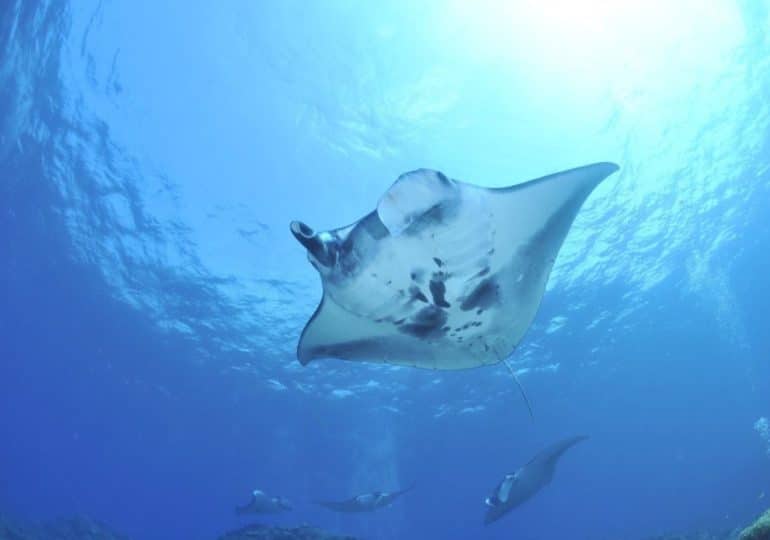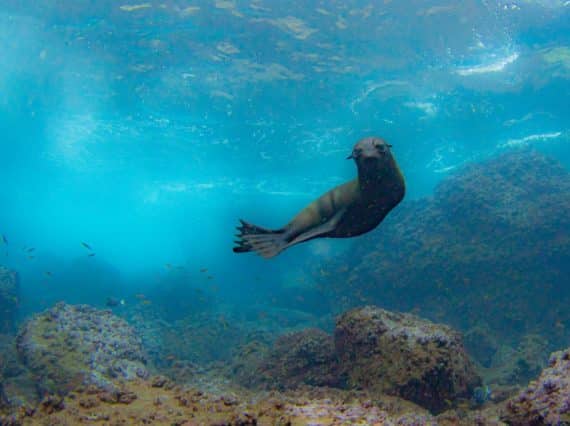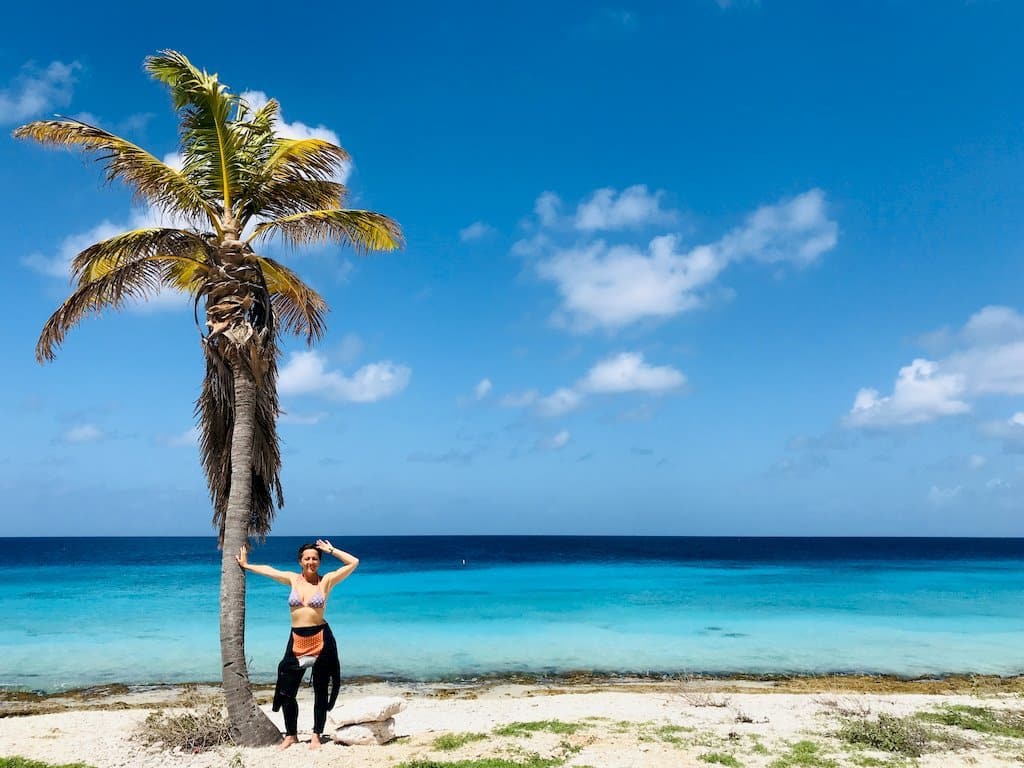Diving with the manta rays in Tobago

This week we head to Tobago to dip our fins in one of the places of the world. There you are almost guaranteed to dive with manta rays, just that. Manta rays in Tobago are so nice.
Tobago is a real little marine paradise capable of making you experience very extraordinary dives with lovely creatures.
Tobago is part of the Republic of Trinidad and Tobago. While the two islands of Trinidad and Tobago are very different. Tobago has long made the choice of a tourism-oriented economy.
A popular destination for divers (too much?). This small island, 40 km long and 12 km wide, extends 310 km2. At short distance from the South American continent off the Venezuelan coast. Situated beyond the “hurricane belt”. Tobago is bordered on its northeast flank by the Atlantic Ocean and by the Caribbean Sea on its southwest flank.
From a decorative point of view, Tobago is home to one of the first forest in the world to have been classified as a protected area. Its rain forest, accessible under the guidance of truly competent local guides, hosts many species of birds, mammals, snakes, frogs … Ecodevelopment is favored which gives the island a wilder and more natural aspect than Trinidad, his sister island.
On the cultural side, we appreciate the famous carnival of Tobago but also the enormous musical heritage of the island. Cradle of musical current such as soca, steel-drum or calypso, in Trinidad and Tobago music is everywhere.
What about diving?
If there are plenty of divers coming to soak their fins in this wonderful place. There are obviously good reasons. Submerged mountains, arches, underwater caverns, … form a dream setting where a lot of animals evolves harmoniously. You can find species like sharks, tarpon, dolphins, jacks, turtles, angels, gorgonians. Anemones, magnificent sponges and the famous coral brains (Colpophyllia natans) including Kelleston Drain spot which reaches a height of 3 meters for nearly 5 meters in diameter. Really amazing. It even seems that the lucky ones can see whale sharks. All in the middle of colorful reefs and a wild environment.
But one of the major assets of Tobago is certainly the possibility of seeing manta rays in any season.
To see the majestic flight of these impressive pelagics attracted by the zooplankton brought by the marine currents of the Atlantic is a unique diving experience once in a lifetime as a diver.
Characterized by large triangular pectoral fins, horn-shaped heads and a large mouth, Manta rays in Tobago, cousins of sharks, are pelagics living in the temperate, subtropical and tropical waters of the seas and oceans of the world. They can reach a wingspan of nearly 7 meters and sometimes jump out of the water without knowing the reason.
Although there are many species of rays, manta rays remain the preferred to divers. To see a manta ray, to observe its displacement, to approach with respect and to see it go away in the blue is a really fascinating experience. Indeed, what diver has not dreamed of crossing these fabulous animals at the turn of an exploration of scuba diving?
Their enormous size but also the fact that they easily get used to human beings makes the manta rays popular with divers. But it would be a shame to forget that the manta rays are and remain above all wild animals. We have the chance to observe. It must therefore be borne in mind that we are invited in their marine world. And that, for their well-being and to be able to continue observing them for a long time, it is necessary to respect their tranquility and not to force the meeting for example for a super cliché … at the risk of making them scare off.

In the meantime, while we can observe them in the Maldives, Indonesia, Australia and many other parts of the world, we are delighted to be able to meet them in the exceptional marine environment of Tobago during exciting underwater dives.
It remains to define what is the best season for Manta rays in Tobago.
Although in Tobago the temperatures are relatively stable and pleasant thanks to the trade winds, there are still two more marked seasons. The first is the dry season. It extends from January to May and offers the opportunity to observe turtles nesting, to see a greater concentration of manta rays and other large marine animals and to enjoy the famous concerts of calypso in the cities. However, it is also the season when the water loads in plankton (hence the presence of pelagics) and the visibility can be clearly less than 20 m.
The rainy season
The rainy season runs from June to September. During this season, the atmosphere is charged with moisture which, with the heat and the “breakdowns of trade winds”, can be perceived as really stifling. The temperature of the water oscillates all year round around 26 ° C allowing to dive with a suitable material and a light wetsuit.
Finally, the best time for diving could be autumn with nice dives on the reefs. The visibility is about 25 meters which allows to make the most of the fauna and flora in this wonderful place of the world.
Have you ever been diving in Tobago? Share your experiences with all of us
To discover every week an idea for diving, join the Differentdive tribe
… What a great day
Join my Facebook page for more sharing
Helene










